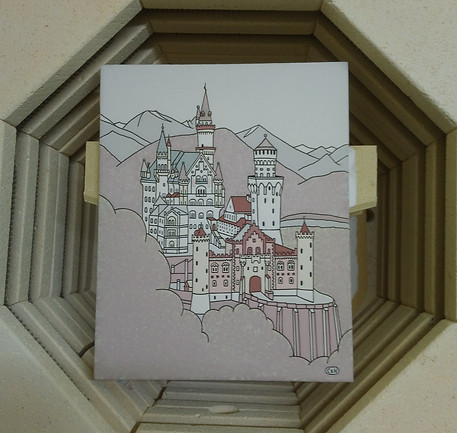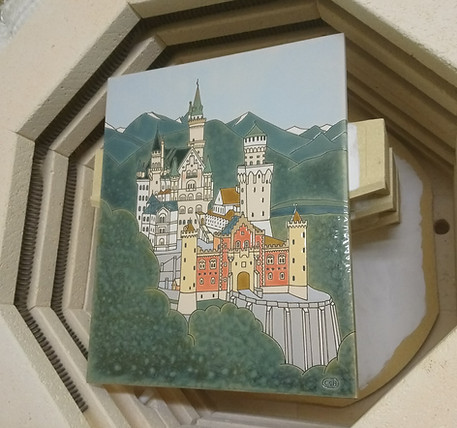
Dr. Csilla Hoffmüller ceramic art

I made all of my non-luminous ceramic pictures using the so-called Cuerda Seca technique. The production of the luminous ceramic products is based on a further development of the classic Cuerda Seca technique, patent pending: DE102024102482A1 (download as PDF file on my homepage for luminous ceramic products). Cuerda seca (Spanish for "dry string") is a technique for applying colored glazes to ceramic surfaces that dates back to the 12th century.
"When different colored glazes are applied to a ceramic surface, the glazes tend to run together when fired. In the Cuerda Seca technique, the water-soluble glazes are separated on the surface by thin lines of a greasy substance to prevent the demarcated areas from running. A dark pigment such as manganese carbonate is usually mixed with the fat to create a dark line around each colored area" (https://de.wikibrief.org/wiki/Cuerda_seca).
However, the lines do not contain any substance that ensures that they bond firmly to the tile after firing. What happens during the glaze firing that the lines cannot be scratched off after firing?
My interpretation is as follows: This can be explained (if the firing temperature is around 1,000°C or higher) by a process that takes place in the gas phase, whereby more easily evaporable components from the glazes, but not pigments, enter the gas phase and form an equilibrium with the liquid glazes. Due to a dynamic gas phase process, the glass particles are deposited over the entire ceramic product as it cools, including over the unglazed lines, despite their original separating effect. This thin transparent glaze layer leads to a firm bond between the lines and the adjacent glazes on the ceramic base layer. Furthermore, the temperature dependence of this process means that the additional transparent glaze layer becomes thicker as the temperature increases. This gas phase process takes place during glazing processes above approx. 1000°C. It means that defects that can occur when applying the glaze or during firing processes below 1000°C, e.g. pinholes, are closed to such an extent that a barrier is formed against typical environmental influences during use. This effect is particularly important, for example, for frost-proof stoneware tiles and all applications for which the tightness of the glaze is important.
The classic Cuerda Seca technique does not work below approx. 1000°C.
All of my tiles - regardless of whether they glow or not - (small and large tiles, including the medallions) can be touched (e.g. for blind people) because of the deeper contours. They have a 3D effect. This is also evident in the fact that light effects or reflections occur along the lines.
With ceramic glazes I paint on unglazed tiles (biscuit or biscuit ceramics). All the tiles I use are made of earthenware. They are more porous and lighter than tiles made of stoneware (e.g. floor tiles). They are not frost resistant. Earthenware tiles (e.g. wall tiles) are painted with earthenware glazes and usually fired between 1000°C and 1100°C.
All ceramic glazes I paint with are lead-free and contain no other harmful substances. They often have a completely different color before firing than after firing.
Special effects can be achieved by mixing different glazes, changing their composition or optimizing the cooling curve after firing (e.g. tempering at certain temperatures or slow cooling).


After burning
Before burning